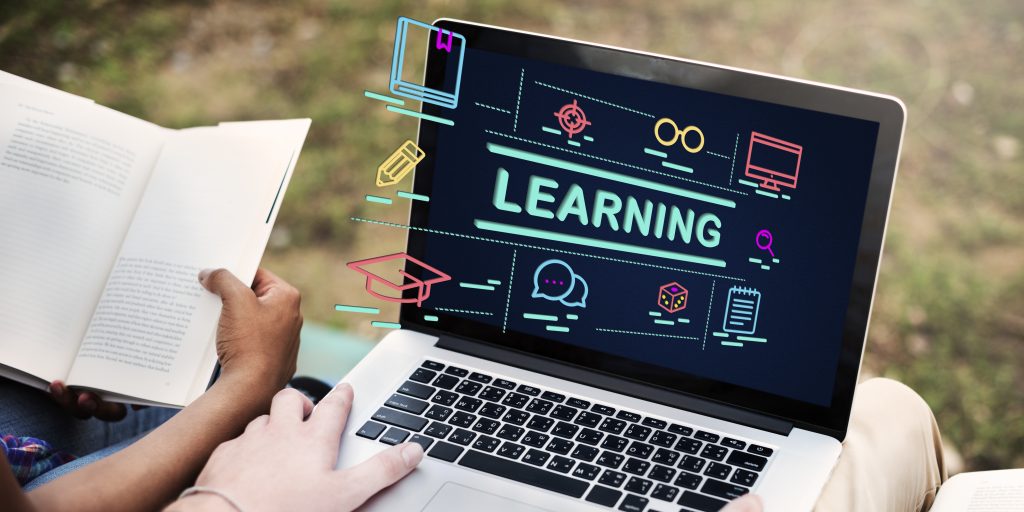What Makes a Learning Environment ‘Sticky’
Jessica White July 22, 2025
In a world where the digital landscape is evolving at lightning speed, the ability to retain and apply information has never been more important. As educational methods and technologies continue to transform, there’s one fundamental question that continues to emerge: What makes a learning environment “sticky”?
A sticky learning environment is one where information is not just absorbed temporarily, but is retained and applied long-term. It’s the difference between short-term memorization and deep, transformative learning. But with so many tools, techniques, and methodologies available today, how do educators and organizations create environments where learning truly sticks?
In this article, we will explore the key factors that contribute to a sticky learning environment, drawing on current research, trends, and practices. By the end of this piece, you’ll have a comprehensive understanding of the elements that make learning engaging, meaningful, and ultimately, lasting.

The Cognitive Science Behind “Sticky” Learning
To understand why some learning environments are more effective than others, it’s important to first examine the cognitive science behind learning. Research has shown that the way information is presented and processed greatly impacts its retention.
1. Active Learning vs. Passive Learning
Active learning is a teaching method that encourages students to actively engage with the material, rather than passively absorbing information. This includes methods like problem-solving, discussions, peer teaching, and hands-on activities. Passive learning, on the other hand, often involves more traditional methods such as lectures, where students listen and take notes without actively engaging with the content.
- Scientific Insight: A 2014 study published in Science found that students who engage in active learning retain information more effectively than those who learn passively. In fact, active learning techniques increase student performance by 6% on average.
- Example: A simple shift from lecture-based learning to group discussions or interactive activities can turn a passive learning environment into one that truly sticks. When students apply the concepts in real-life scenarios, they are more likely to internalize the information.
2. The Role of Spaced Repetition
Spaced repetition is a learning technique that involves reviewing material at increasing intervals over time. It’s based on the concept that information is more likely to stick if it is revisited multiple times at strategic points.
- Scientific Insight: According to research published in Psychological Science, spaced repetition enhances long-term retention by allowing the brain to consolidate information in stages. Instead of cramming all at once, spaced intervals of review promote deeper learning and better memory recall.
- Example: Apps like Anki or Quizlet are designed to help students use spaced repetition to master concepts. Whether learning a new language or studying for exams, these tools ensure that learners are revisiting material at the right time for optimal retention.
3. Retrieval Practice
Retrieval practice is the act of actively recalling information from memory, rather than just reviewing it. This technique strengthens the neural connections related to the information and enhances memory retention.
- Scientific Insight: A 2013 study in Psychological Science demonstrated that students who practice retrieval (by quizzing themselves or summarizing material from memory) remember information better than those who simply review their notes. The act of retrieval itself helps solidify the information in long-term memory.
- Example: Instead of simply re-reading notes, students can test themselves on the material or explain it to a peer. This process strengthens their understanding and improves recall when they need the information later.
Key Factors in Creating a Sticky Learning Environment
Now that we understand the cognitive principles behind effective learning, let’s explore the practical elements that contribute to a sticky learning environment.
4. Engagement and Motivation
Engaged learners are more likely to retain information. A sticky learning environment makes learning interesting, relevant, and exciting. Motivation plays a huge role in this engagement—when learners are motivated, they are more likely to take the initiative in their learning, which leads to deeper understanding.
- Example: Gamification has become a popular trend in education because it taps into intrinsic motivation. By turning learning into a game, students become more engaged and motivated to complete tasks. This includes earning rewards, leveling up, or completing challenges in a game-like environment.
- Research Insight: A study by The Bill & Melinda Gates Foundation found that gamified learning environments improve student engagement and retention by incorporating elements of competition, reward, and progress tracking.
5. Personalization and Real-World Relevance
Personalized learning refers to tailoring educational experiences to individual needs, interests, and learning styles. When students see the relevance of what they’re learning, it becomes easier for the information to “stick.”
- Example: In a personalized learning environment, students may choose topics that interest them, allowing them to connect their personal passions with the learning material. This sense of ownership over their learning experience fosters greater motivation and engagement.
- Scientific Insight: According to The Journal of Educational Psychology, personalized learning has been shown to improve engagement and retention. When learners can relate what they’re learning to their own lives, they are more likely to apply the concepts long-term.
6. Collaboration and Social Learning
Humans are social beings, and learning is often more effective when done in collaboration with others. A sticky learning environment fosters a sense of community and encourages collaborative learning, where learners exchange ideas, solve problems together, and learn from one another.
- Example: Group projects, peer-to-peer discussions, and collaborative tools like Google Docs encourage students to work together and reinforce each other’s learning. The social aspect of learning enhances retention, as explaining concepts to others strengthens your own understanding.
- Research Insight: A 2016 study in Educational Psychology Review found that collaborative learning increases both cognitive and affective outcomes. Students who engage in discussions and group activities tend to retain more information and feel more confident in their learning.
7. Feedback and Reflection
Feedback is essential to the learning process. It helps learners understand what they’ve mastered and where they need to improve. Reflection allows learners to process and internalize their experiences, reinforcing what they’ve learned.
- Example: Instead of simply completing assignments and moving on, a sticky learning environment encourages students to reflect on their performance. They may discuss their mistakes with a mentor, seek feedback from peers, or journal about their learning experiences.
- Scientific Insight: According to The International Journal of Educational Research, feedback and reflection are critical to improving retention. When learners are given constructive feedback and time to reflect, they are better able to make connections between new and existing knowledge.
How to Create a Sticky Learning Environment: Practical Tips
Now that we’ve covered the theory behind sticky learning environments, let’s focus on actionable strategies to implement in your own educational settings, whether in a classroom, workplace, or personal study.
8. Incorporate Active Learning Techniques
Shift from passive lecture-based methods to more interactive approaches. Incorporate activities like problem-solving, case studies, debates, and role-playing into your lessons. These activities encourage critical thinking and require learners to engage with the material on a deeper level.
- Actionable Tip: Include interactive components in presentations, such as live polling, Q&A sessions, or group activities that require learners to apply what they’ve just learned.
9. Implement Spaced Repetition Systems
Utilize tools or strategies that help learners review information at regular intervals. Spaced repetition techniques improve long-term retention by ensuring that information is revisited before it’s forgotten.
- Actionable Tip: Use apps like Anki or Quizlet to create flashcards for key concepts. Encourage students to review these flashcards regularly to reinforce learning.
10. Promote Collaborative Learning
Foster a sense of community among learners by encouraging group work, peer feedback, and collaborative projects. The social aspect of learning enhances understanding and helps learners see multiple perspectives on the same topic.
- Actionable Tip: Create opportunities for students to work together on assignments, host group discussions, or organize peer review sessions.
11. Personalize the Learning Experience
Understand that every learner has different needs and learning styles. Personalizing the content or allowing for self-paced learning can increase engagement and help learners take ownership of their educational journey.
- Actionable Tip: Provide different ways for students to engage with the content, such as offering video tutorials, readings, and interactive exercises. Allow learners to choose the methods that best suit their learning preferences.
12. Encourage Regular Reflection
Give students time to reflect on what they’ve learned, both individually and in groups. Reflection encourages deeper understanding and helps consolidate new knowledge into long-term memory.
- Actionable Tip: Incorporate journaling prompts, reflection exercises, or group debriefs into your teaching practice to encourage reflection on key concepts.
Conclusion
In the information-heavy world we live in, the ability to retain and apply knowledge is more important than ever. A sticky learning environment, built on the principles of engagement, connection, and reflection, ensures that learning isn’t just temporary—it’s long-lasting. By embracing active learning, spaced repetition, and personalized experiences, educators and organizations can create environments where knowledge sticks and learners thrive.
Ultimately, a sticky learning environment isn’t just about remembering facts—it’s about fostering critical thinking, creativity, and lifelong learning. By shifting away from passive information absorption and towards deeper, more meaningful engagement, we can create educational experiences that truly resonate and endure.
Reference
- Kornell & Bjork (2008) showed spaced learning significantly improves retention versus massed practice – https://en.wikipedia.org
- Nature Reviews Neuroscience notes encoding variability and study-phase retrieval mechanisms behind spaced learning benefits – https://pmc.ncbi.nlm.nih.gov
- A 2014 Science paper found active learning boosts student performance by ~6% over passive lectures – https://en.wikipedia.org







